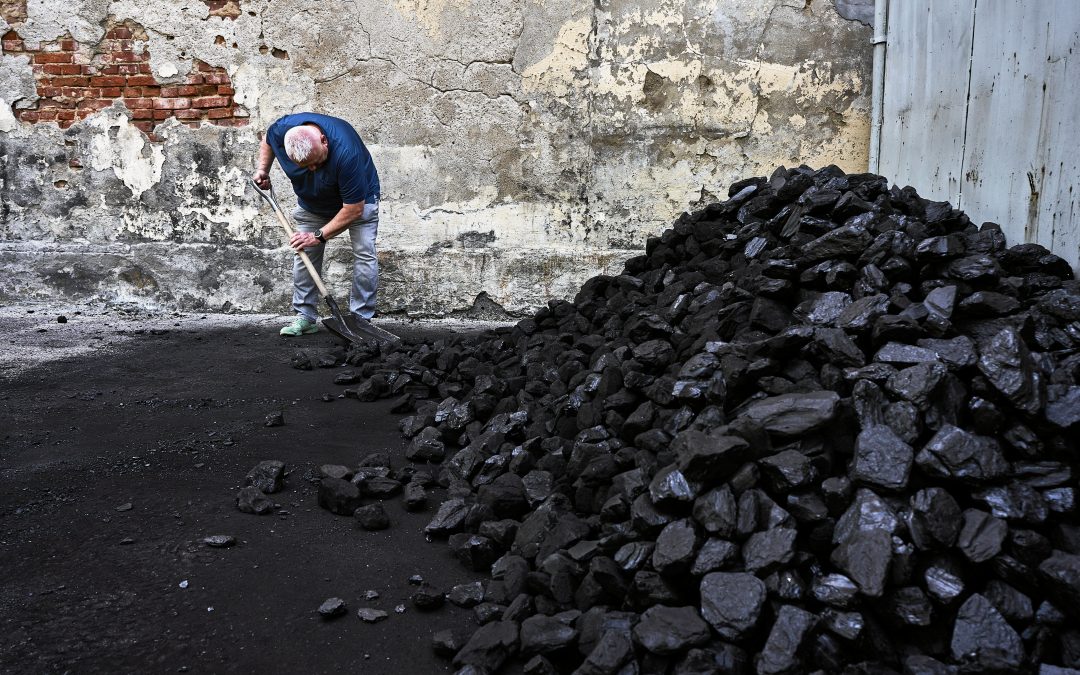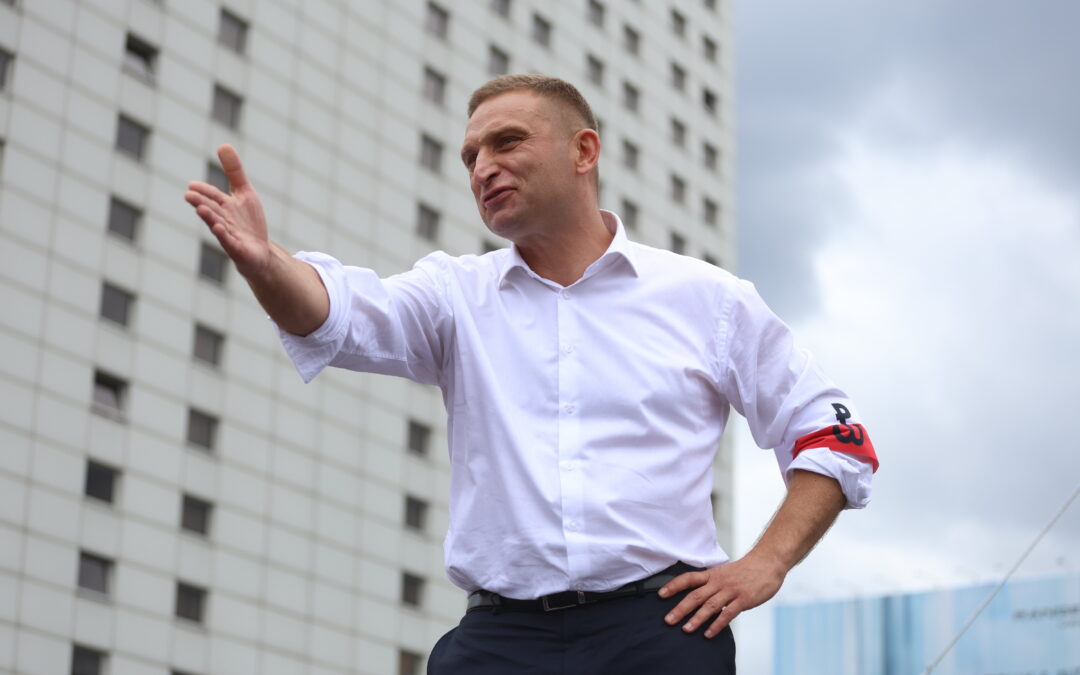By Anna Rzhevkina
Several weeks ahead of the heating season, 50-year-old Maria from Gdańsk still has no idea whether she will be able to buy coal to heat her home, and at what price. “This is the first time I am in such a situation,” she told Notes from Poland. “Last year it was totally different – the coal was cheaper and we could buy it.”
Maria lives with her family in a 75-square metre apartment in the suburbs of Gdańsk. To keep it warm, she used to buy coal in batches, half a tonne each, but this year she prefers to wait until September, hoping that “the situation will normalise somehow”.
“I don’t stock up – I can’t afford to,” she says. “Maybe earlier, yes, but now everything is so expensive.” Maria is one of the millions of Poles wondering how they will survive the upcoming winter after, in April, Poland imposed an embargo on Russian coal, deciding not to wait for the rest of Europe.
The EU-wide ban on Russian coal imports then came into force on 10 August, intensifying the competition for coal imports from alternative sources including Colombia, Australia, and the United States.
A valuable commodity
Poland is the European Union’s top coal producer and a key exporter of coal used in the steel industry, with the country’s share in the total EU output exceeding 95%, according to the latest Eurostat data.
At the same time, however, it was heavily reliant on Russian coal for domestic heating before the embargo came into force. This coal should be of high quality, with few impurities and a suitable size of chunks.
Polish households use 8-10 million tonnes of coal per year. Of these, Poland used to import 3-5 million tonnes, mainly by train from Russia and Kazakhstan, according to Michał Smoleń, head of the energy and climate programme at the think tank Instrat.
“It is not easy to replace, as it is not a type of commodity that is directly sold on the international market from other sources,” Smoleń told Notes from Poland. “It is necessary to import a more general coal mixture and then sort out sizes appropriate for household use.”
Russian coal contains 30-40% of bigger chunks, while in Colombian coal, which is seen as an alternative, the share is about 10-15%. Even with new imports, the country faces a gap of 2-3 million tonnes of this type of coal, according to estimates by Wysokie Napięcie, an energy news website.
Government faces criticism amid scramble to support households
With the heating season approaching, Polish Prime Minister Mateusz Morawiecki ordered state companies to buy 4.5 million tonnes of coal by the end of October to supply households and later extended the decision, ordering further purchases until the end of the heating season.
“We are on track to secure enough coal not only to meet the demand to the end of year, but also to the end of the heating season,” he assured.
Aleksander Śniegocki, CEO of the independent think tank Reform Institute, however, questions how fast additional imports from other suppliers will reach Polish consumers.
Balancing coal demand and supply on the national level may not guarantee that everyone gets the amount of fuel they need on time given that many households will decide to make additional coal reserves, he said.
According to Śniegocki, with prices three or four times higher compared to previous years, low-income households may struggle to buy enough fuel.
To compensate for rising energy costs, in June the government attempted to set up guaranteed prices at 996.60 zloty (€212) per tonne, at the level seen last year, offering sellers compensation for potential lost profits of up to 750 zloty (€158) per tonne. But as market prices jumped to 3,000 zloty (€637) per tonne, the programme proved unpopular with businesses.
Scrambling to find a new solution, the government granted households using coal a one-off allowance of 3,000 zloty. The allowance was initially available to households where the main source of heating is coal or pellets containing at least 85% hard coal, sparking criticism from experts for leaving out households that use other heating solutions.
Rządowy #dodatekwęglowy nie daje wsparcia połowie mieszkańców o niskich dochodach, ale wspiera aż 30% z wysokimi dochodami. #dodatekenergetyczny kieruje pomoc tam gdzie jest ona naprawdę potrzebna 👉https://t.co/G3o7XTT6cy pic.twitter.com/6mr5brd5HQ
— IBS Fundacja Naukowa (@ibs_thinktank) July 28, 2022
Industry experts, however, criticised the move for distinguishing households based on the type of fuel they use rather than their financial situation. “Instead of focusing on those most affected by energy poverty, the subsidy applies to everyone who declares that they are using coal as the main source of heating,” says Śniegocki from Reform Institute.
Andrzej Guła, the leader of Polish Smog Alert – an activist movement monitoring air quality – said the solution treats the citizens in “an extremely unfair manner”.
The organisation drafted its own proposal, offering to provide subsidies to the poorest households, regardless of the heat source they use. Polish Smog Alert estimate that such a solution would save about 2 billion zloty (€425 million) from the 11.5 billion the government plans to spend.
In August, the government extended the allowances to households that use types of fuel other than coal. The subsidies amount to 3,000 zloty for pellets, 2,000 zloty for heating oil, 1,000 zloty for wood, and 500 zloty for liquefied petroleum gas (LPG).
The climate and environment ministry, however, said it will not introduce income criteria for energy subsidies as it does not want the income verification to slow down payments.
While there is no single immediate solution to the problem, Smoleń from Instrat notes that the government could have done more to promote energy efficiency, because people tend to stick to their daily habits, and rising prices only partly and slowly lead to lower consumption.
In addition, wealthier houses are likely to stock coal amid the fear of deficit and the always-present risk of harsh winter, further fuelling the price increase.
Smoleń notes that another long-term solution is to move to greener energy sources by encouraging people to install heat pumps, which are as clean as electricity used to power them. “We have to move away from coal consumption, especially the type of coal we don’t have in Poland,” he adds.
A survey by the Rzeczpospolita newspaper showed that 80% of Poles favour the development of renewable energy sources, such as wind and solar farms, and hydropower plants, while only 44.6% believe that Poland should increase coal mining in response to the energy crisis.
Rapid expansion of renewables is the way out of the energy crisis, not a threat to 🇵🇱's energy security ⚡
🏭 When ensuring sufficient coal and gas reserves for this winter, the gov't should focus more on the demand side, not only supply ⚒ – I argued today at @PolsatNewsPL 📺 pic.twitter.com/m931gQjN34
— Michał Hetmański (@hetmanski_m) August 10, 2022
Air quality at stake
Air quality platform Airly, however, warns that the government’s move allowing and even encouraging people not to give up on coal will intensify air quality problems in Poland.
Despite some recent improvements, Poland continues to struggle with some of the EU’s most polluted air, particularly in the colder months, and emissions from single-family houses are responsible for about 50-60% of air pollution.
“Considering that we are currently struggling with a high level of inflation, which exceeds the higher cost of living, it cannot be ruled out that rubbish burning may also take place,” Marcin Gnat of Airly told Notes from Poland.
He noted that the coming autumn and winter will show how much the air quality will be affected, as it is too early to draw conclusions.
To save on energy, people may also switch to low-quality coal. This was illegal in Poland until July, when the government suspended quality standards, citing the “current exceptional situation”.
In the view of Śniegocki from Reform Institute, this “desperate move” to minimise the risk of Polish households running out of fuel to burn will reverse much of the progress towards better air quality in Poland made in recent years.
But time is running out. “An alternative solution would be to invest more in improving energy efficiency and replacing old heat sources in the past several years, but we do not have enough time for that to make a significant impact before the heating season,” he concludes.
The sharp rise in coal prices is likely to last for years as the whole of Europe will have to source more supply from sources other than Russia, according to an analysis by Fitch Solutions carried by Bloomberg.
The abrupt end to supplies from Russia put the Polish government in crisis management mode, revealing past mistakes, such as slow progress in making Polish buildings more efficient and switching to alternative sources of heating.
The embargo switched the country’s focus, at least in the short term, from slowly moving away from coal to desperately securing its supplies to make sure that Maria and many other people like here will have enough to get through the winter.
Main image credit: Tomasz Stańczak / Agencja Wyborcza.pl





















